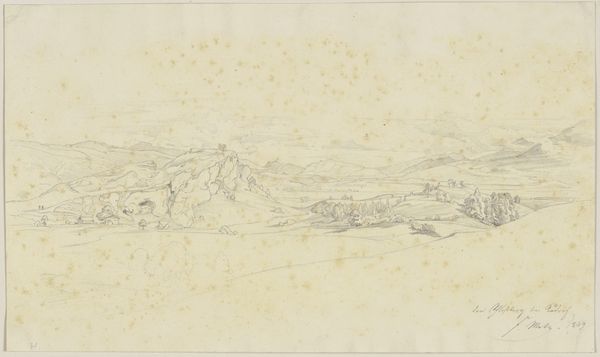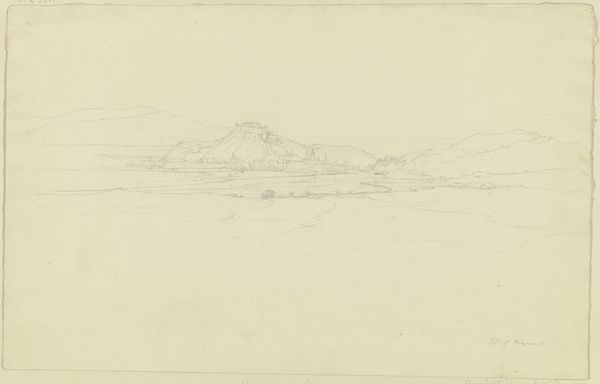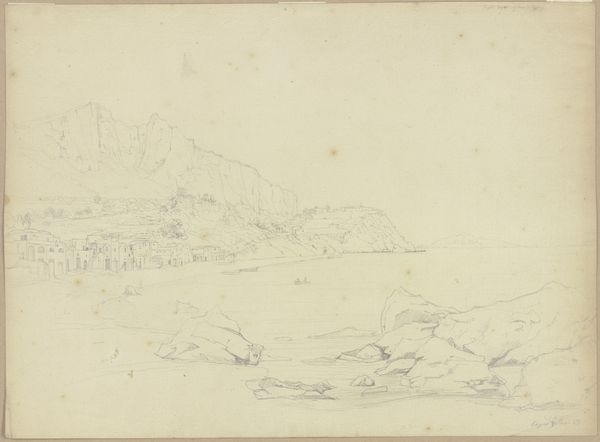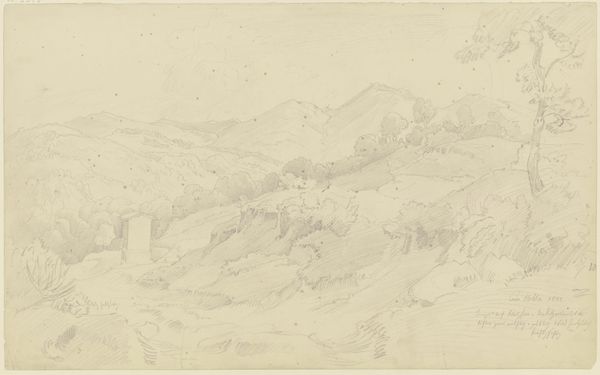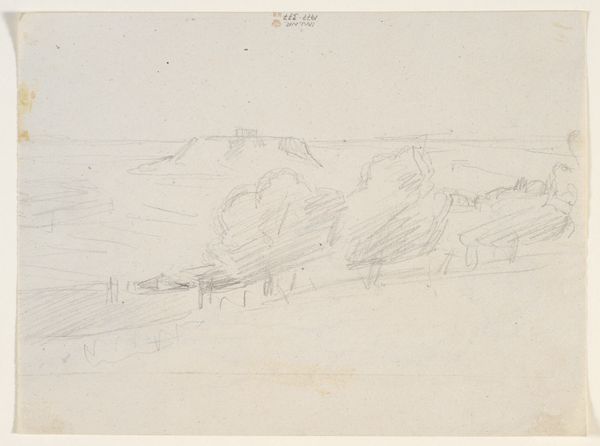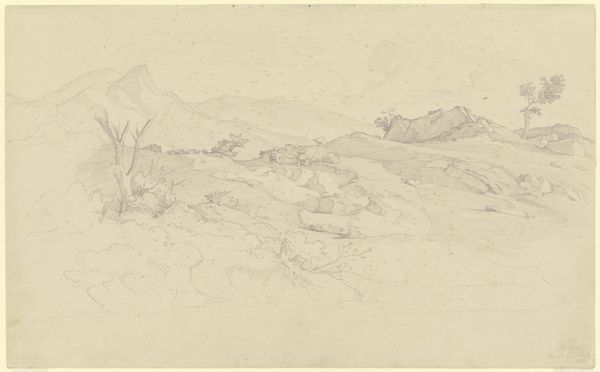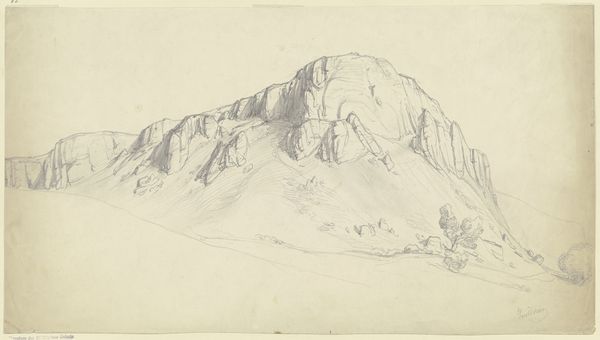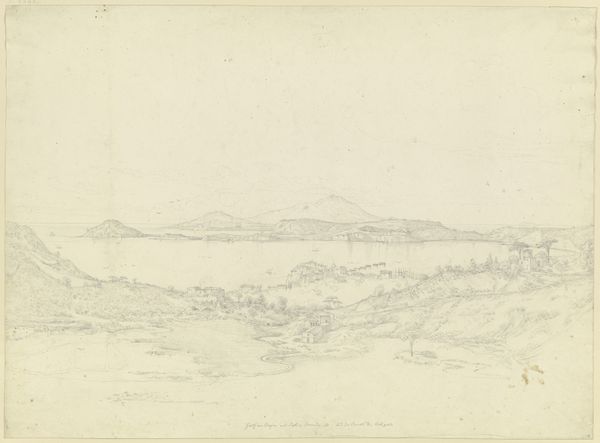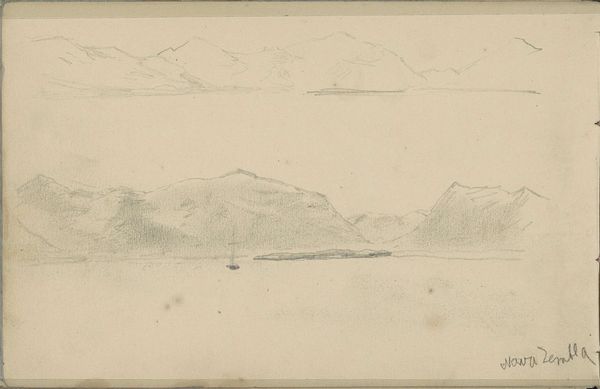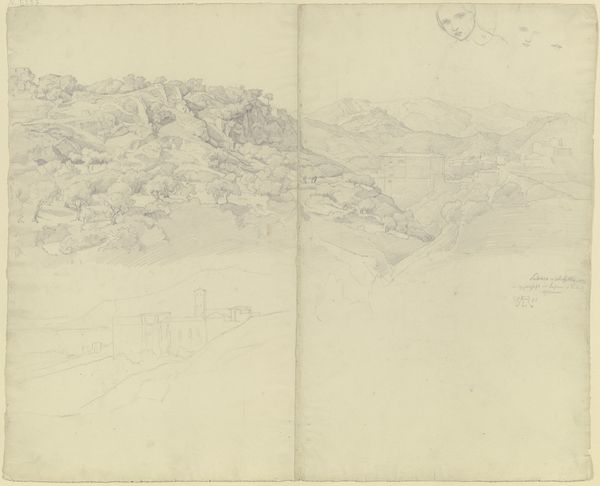
Copyright: Public Domain
Editor: So this is "View on Capri," a graphite and pencil drawing by Johannes Thomas, dating back to 1823. It feels very delicate, almost ethereal, the mountain looming over the buildings. What symbols do you see in this piece, and what meanings do they hold? Curator: Immediately, I see a landscape laden with the romantic era's symbolic vocabulary. The towering mountain isn't merely a geological feature. In romanticism, mountains represented the sublime, the overwhelming power and grandeur of nature that dwarfs human concerns. Do you notice the diminutive size of the buildings nestled at its base? Editor: I do, yes. It makes the people living there seem...insignificant against this giant backdrop. Curator: Precisely! The village becomes a symbol for human settlement, dependent on and vulnerable to the forces of nature. Furthermore, think of Capri itself. It was a destination, especially for Northern European artists, seeking a kind of Edenic escape. Is this drawing simply a record of a place, or a projection of longing? Editor: So it’s about more than just pretty scenery? Curator: Far more. The sketch quality also speaks volumes. Notice the artist’s light touch; the details are suggested rather than rigidly defined. The image feels like a dream, a half-remembered vision. Perhaps this alludes to the transient nature of human experience against the enduring backdrop of the natural world. What emotional effect does the drawing evoke in you? Editor: I guess a feeling of awe, but also fragility... a reminder that everything changes. Curator: Exactly. It's a dialogue between permanence and impermanence, power and vulnerability. The symbols whisper stories about humanity’s place in a much grander scheme. Thank you for your interpretation.
Comments
No comments
Be the first to comment and join the conversation on the ultimate creative platform.

